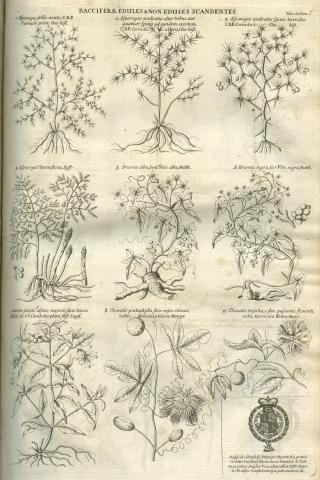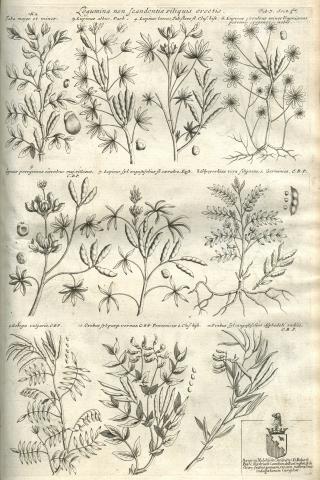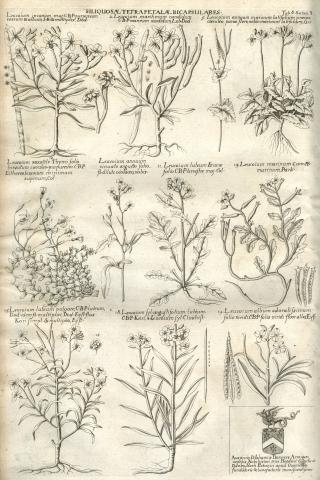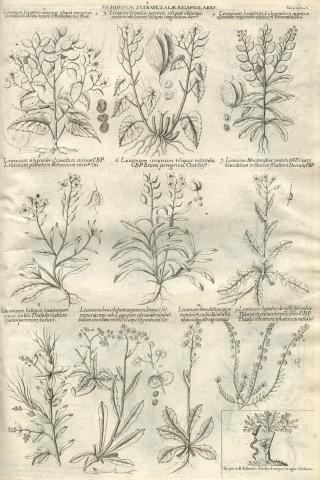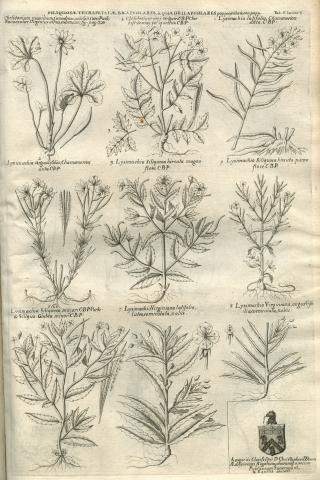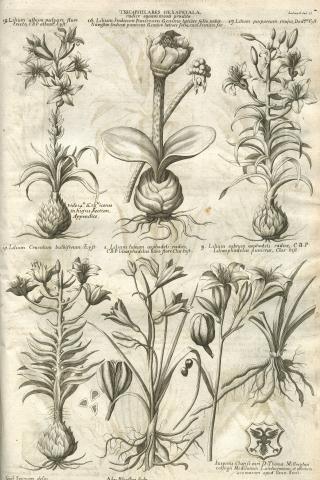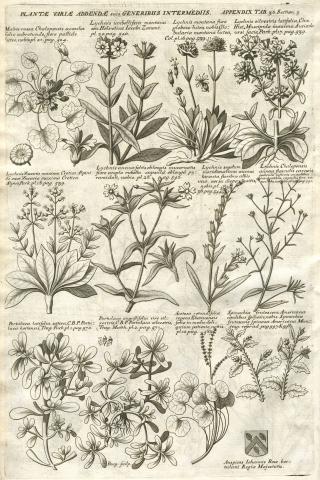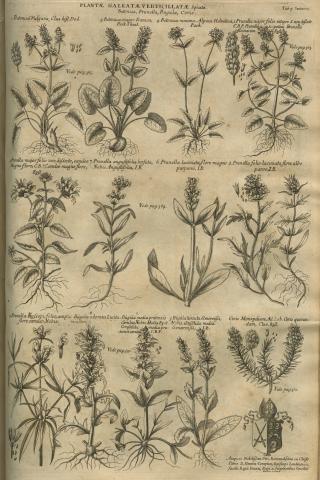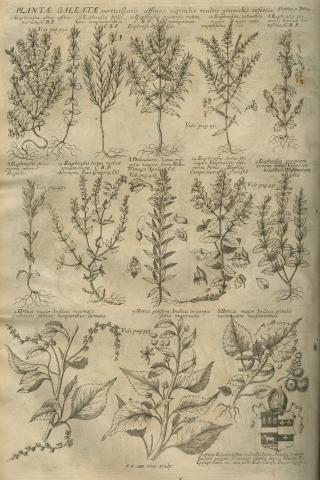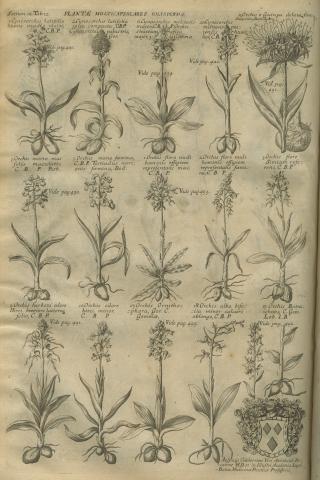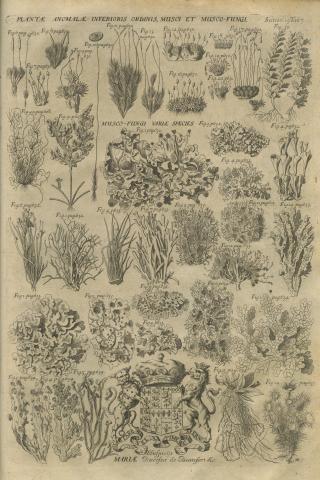Funding Morison's project
Publication, ‘by reason of the excessive charge of Designing, Graving, and Printing’, comes with a price tag. By 1675, in a Proposal to Noblemen, Gentlemen and others (1675) Robert Morison was asking subscribers to give five pounds to support the preparation of each plate of the Historia. In return, they would get ‘an Honourable memorial … by engraving their Coat of Arms on their respective Plates (as is already done to other in the foremention’d Essay [Plantarum umbelliferarum], as likewise in an hundred Plates and upward, of the five Sections now in hand’, a copy of the final printed volume and when they paid their subscription, ‘one of his Specimens Umbellarum’. He had ‘good hopes, he shall by the Assistance and Encouragement of the Generous, be enabled to give good satisfaction to the Curious therein'.
Two hundred and ninety-two plates are included in Part 2 (126 plates) and Part 3 (166 plates) of the Historia. Of these plates, 194 (c.66%) have sponsorship associated with them. Whereas in Part 2 all the plates were sponsored, only 68 (c.41%) were sponsored in Part 3. Morison evidently had more success raising funds than Bobart the Younger.
Prominent among the sponsors were individuals who had Scottish connections, bishops with Oxford associations, heads of Oxford colleges and senior members of the University. The sponsors of Part 2 are dominated by members of the Royal College of Physicians and members of the Society of Apothecaries with Scotland. Perhaps more surprising are people in late seventeenth-century natural philosophical society whose names are absent from the plates. For example, few members of the Royal Society are associated with the plate in Part 3 of the Historia. Members of the Society evidently had long memories regarding Morison’s conduct towards them, even though Bobart the Younger was highly regarded by the Society.
One prominent member of the Society offended by Morison was the Essex-based naturalist John Ray (1627-1705). In the Praeludia Botanica (1669) Morison criticised Ray’s classification work as a ‘chaotic muddle of plants’. Ray did not respond in public but in private he was offended: ‘I despise that writer with good cause. Although he is so ill-equipped that he cannot even write decent Latin, he falters himself in such bad taste and is so impenetrably conceited that he scorns men a thousand times more learned than himself and thinks himself unfairly treated because he had not been promoted long ago to a professorial chair. But as long as he sneers so fatuously at the Royal Society, he makes himself ridiculous to all same and decent-minded people.’ (Raven, 1950: 184; letter from John Ray to Martin Lister. 7 May 1669:).
In Part 3, many of the unsponsored plates have an additional plant cramped into the lower right corner, where the sponsor’s identity is usually found. In some cases, these corners were left blank. Evidently plates were engraved before sponsors were found. It is therefore unsurprising there are no obvious connections between the sponsor and the plants depicted on their plate.
Mandelbrote (2015: 372) estimated that the Historia cost the University £2153/6/0 to publish, of which £970/0/0 was raised through plate sponsorship.
References
Mandelbrote S 2015. The publication and illustration of Robert Morison's Plantarum historiae universalis Oxoniensis. Huntington Library Quarterly 78: 349-379.
Raven CE 1950. John Ray: naturalist. Cambridge, Cambridge University Press.

